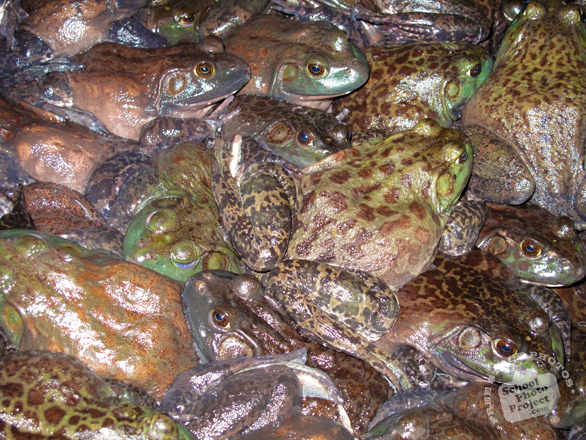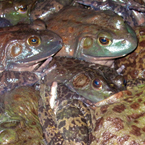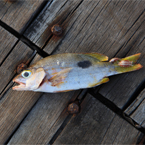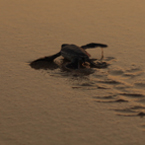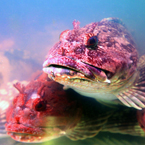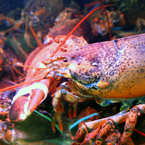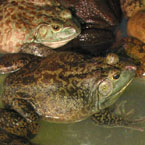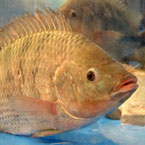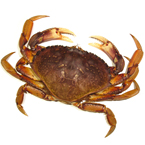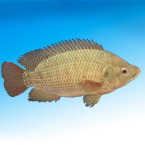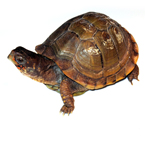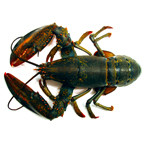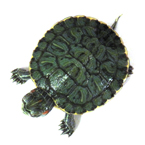Frog
Frogs are amphibians in the order
Anura (meaning "tail-less", from Greek
an-, without + oura, tail), formerly referred to
as Salientia (Latin salere (salio), "to jump").
Most frogs are characterized by a short body, webbed
digits (fingers or toes), protruding eyes, bifid
tongue and the absence of a tail. Frogs are widely
known as exceptional jumpers, and many of the anatomical
characteristics of frogs, particularly their long,
powerful legs, are adaptations to improve jumping
performance. Due to their permeable skin, frogs
are often semi-aquatic or inhabit humid areas, but
move easily on land. They typically lay their eggs
in puddles, ponds or lakes, and their larvae, called
tadpoles, have gills and tails to develop in water.
Adult frogs follow a carnivorous diet, mostly of
arthropods, annelids and gastropods. Frogs are most
noticeable by their call, which can be widely heard
during the night or day, mainly in their mating
season.
The distribution of frogs ranges from tropic to
subarctic regions, but most species are found in
tropical rainforests. Consisting of more than 5,000
species described, they are among the most diverse
groups of vertebrates. However, populations of certain
frog species are declining significantly.
A popular distinction is often made between frogs
and toads on the basis of their appearance, but
this has no taxonomic basis. (Members of the anuran
family Bufonidae are called true toads, but many
species from other families are also called toads.)
In addition to their ecological importance, frogs
have many cultural roles, such as in literature,
symbolism and religion, and they are also valued
as food and as pets.
(Source: Wikipedia.org)
|






